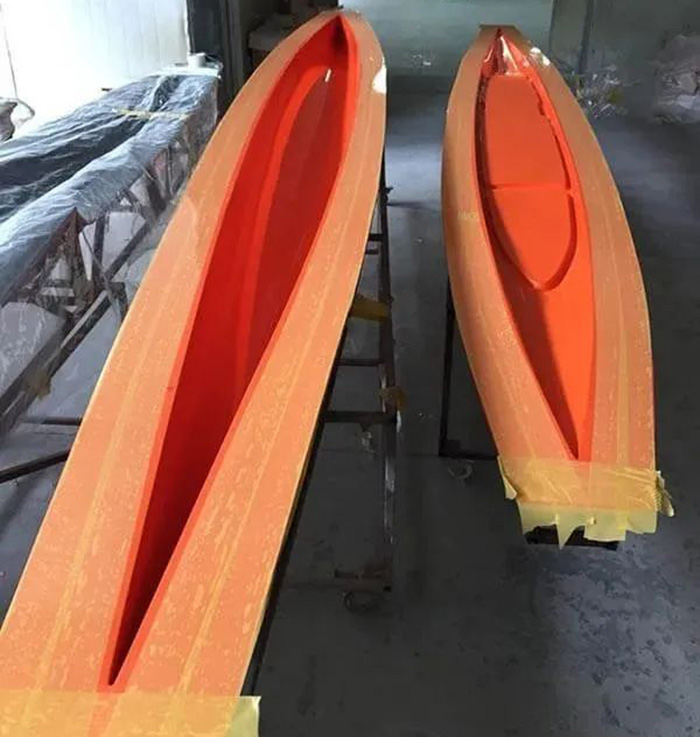First of all, you need to know what the specific requirements of the mold are, ordinary, high temperature resistance, hand lay-up, or vacuuming process, are there any special requirements for weight or performance?
Obviously, the composite strength and material cost of different glass fiber fabrics and polyester resins are also different. We need to know more to ensure a reasonable mix of required mold materials and optimization of mold production costs.
Simply put, the molds used for the hand lay-up process of FRP are the most common. Based on the control of the lowest cost, it is obvious that in many cases, as long as the FRP mold meets the actual needs, higher performance means higher costs.
Some of the necessary materials for traditional FRP mold making, you can have a general understanding:
| Type | Fberglass reinforcement | Resin | Excipients |
| Hand Lay-up FRP Mould | 300g powder chopped strand mat, 30g surface mat, 400g gingham, bulked yarn (R corner filling transition) | vinyl gel coat, unsaturated resin, vinyl resin, new zero shrinkage resin | Silica, mold release wax, pva, curing agent, polishing wax, sandpaper |
| Epoxy resin mold | 300g powder chopped strand mat, 30g surface mat, 400g gingham, bulked yarn (R corner filling transition) | Epoxy gel coat, epoxy resin (various temperature resistance) | Release wax, pva, curing agent, polishing wax, sandpaper |
| Vacuum mold | 300g powder chopped strand mat, 30g surface mat, 400g gingham, bulked yarn (R corner filling transition) | polyester resin | Silica, mold release wax, pva, curing agent, polishing wax, sandpaper, silicone seal |
| RTM FRP Mould | 300g powder chopped strand mat, 30g surface mat, 400g gingham, bulked yarn (R angle filling transition), strong core mat | polyester resin | Silica, wax flakes, mold release wax, pva, curing agent, polishing wax, sandpaper |
In actual mold manufacturing, more mold materials may be involved, such as putty, easy-to-polish gel coat, and other surface modification materials for the original mold.
Post time: Apr-13-2022







